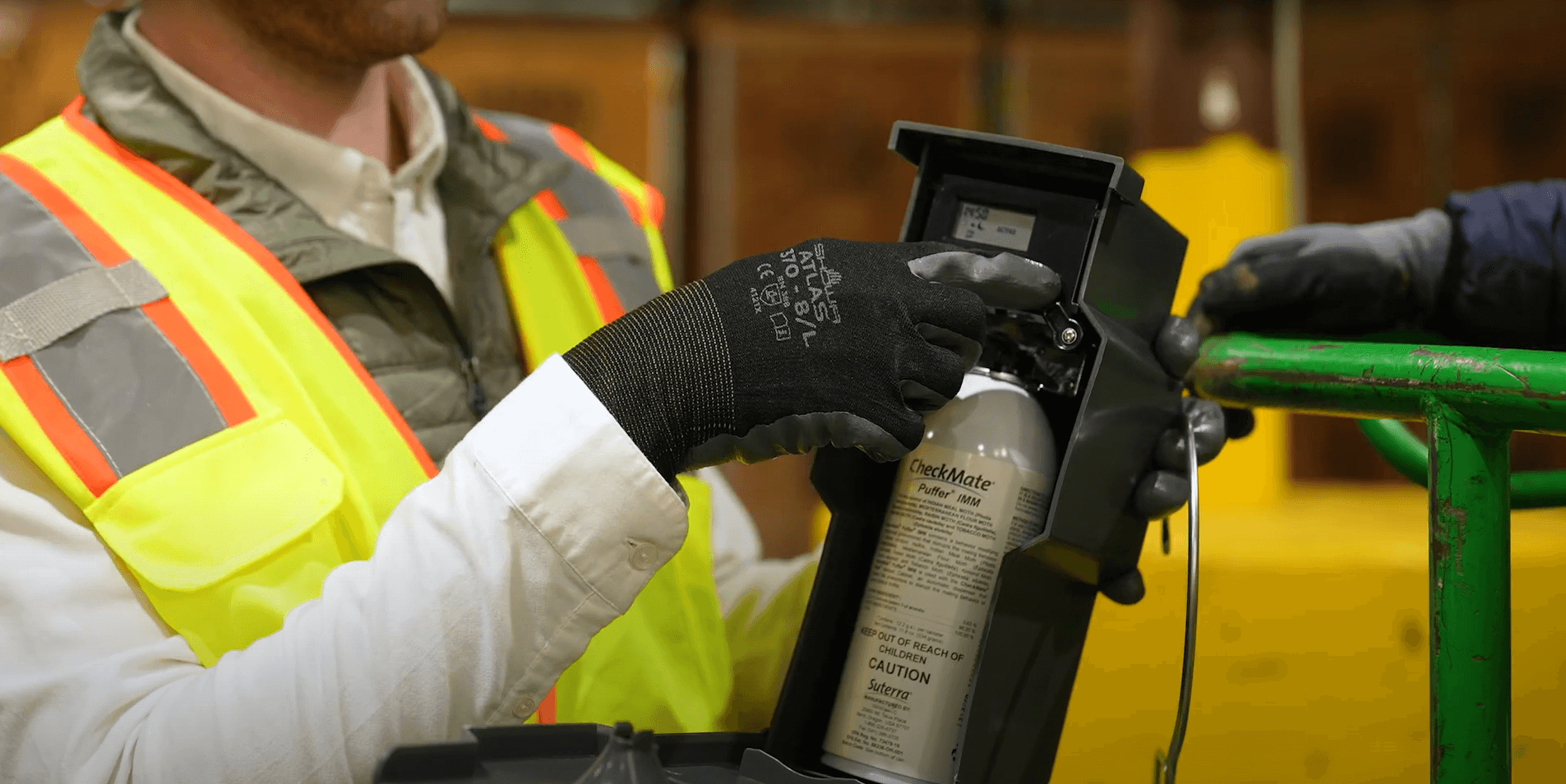How Disrupting Pest Mating through Pheromones Naturally Reduces Indian Meal Moth Issues in Food Processing Facilities
Suterra
Dec 7, 2023 12:20:18 PM


“If you are bringing in any type of dry raw ingredient, processing any dry goods, or have a final product that is or contains dry ingredients, you should be concerned about IMM,” said Chelle Hartzer of 360 Pest and Food Safety Consulting.
Indian meal moths are pests worldwide pests that can quickly spread and move from one infested product to another. The economic damage these pests can cause in food processing facilities makes Integrated Pest Management (IPM) methods that stop infestations especially valuable in that industry.
“IPM is about using all the tools in the toolbox,” said Hartzer. Monitoring, Hartzer added, is one of those tools that often gets overlooked though it’s vital for helping food processors know when they have an IMM infestation, where it’s coming from, and whether IPM methods are doing enough to mitigate the problem.
Implementing a strategy to disrupt the mating cycle using pheromones can be another great tool for food processors to use. Scientists and pest control experts have been studying the use of pheromones in pest management since the 1960s. Use of pheromones usually works in one of two ways: by mimicking a female’s pheromones in small amounts to lure males into traps or by releasing so many pheromones that insects’ normal communication through scent is impossible.
Indian meal moths and their larvae are one of the most common pantry pests in the world and can be found at all levels of the food manufacturing, processing, and distribution industry from raw commodities to retail centers. For consumers, finding IMM in their pantries can mean clearing out and throwing away any affected goods. For brands the problems are multifold.
“Stored product insects not only consume foods, but they can attract regulatory criticism and initiate brand damage,” said Mike Holcomb, consulting entomologist with Technical Directions, Inc. “To keep these pests at a low or no contamination risk level, food processors and ingredient suppliers must be constantly vigil concerning [stored product insect] population increase so that appropriate and timely corrective actions can be taken to minimize product risk.”
“For Indian meal moths, pheromones work very well both as an indicator of their presence and for mating disruption,” said Jerry Heaps, president of J & J Food Safety. Pheromones can be an important part of an effective integrated pest management program. “They are in the air and working all the time while not depending on an insect to ‘touch’ a surface that has been sprayed with an insecticide, be it a residual or non-residual type,” Heaps said.

“Fogging and fumigation are two commonly used approaches to treat active [IMM] infestations, but they are point-in-time treatments offering no real lasting protection,” said Myron Baumann, a partner at P&M Pest Consulting. “Mating disruption is the best tool to reduce breeding….This treatment requires minimal maintenance to be highly effective,” Baumann explained. “This is especially useful when the shipments cannot be inspected or sampled for activity.”
Hartzer said that the mating disruption “failures” she’s seen are more often user error—specifically not using enough of a dosage for the product’s pheromones to disrupt the insects’ chemical communication. This is one advantage to using an aerosolized pheromone like CheckMate® Puffer® IMM that easily and consistently releases the right amount of pheromones throughout buildings food processors want protection for.
The best way to stop Indian meal moth infestations is to prevent them from starting. “Sanitation is pest control,” said Heaps. Sanitation means taking steps to ensure conditions are hostile for the pests so they don’t move in or grow in population.
In addition to agreeing with Hartzer’s recommendation to monitor pest levels, Heaps also recommends food processors follow these three steps:
1. Be aware of spillage on pallets and amongst pallet racking.
2. Physically inspect ingredients prone to pest infestation at least every 30 days and write the date of inspection on the bottom row of material packaging.
3. Vacuum or sweep away debris versus using high pressure air as this only disperses insect life stages and debris.
Together with regular monitoring and sanitation, pheromone-based mating disruption can be an excellent way to keep Indian meal moth infestation at a minimum in any food processing facility. Suterra’s product for IMM control is CheckMate® Puffer® IMM.